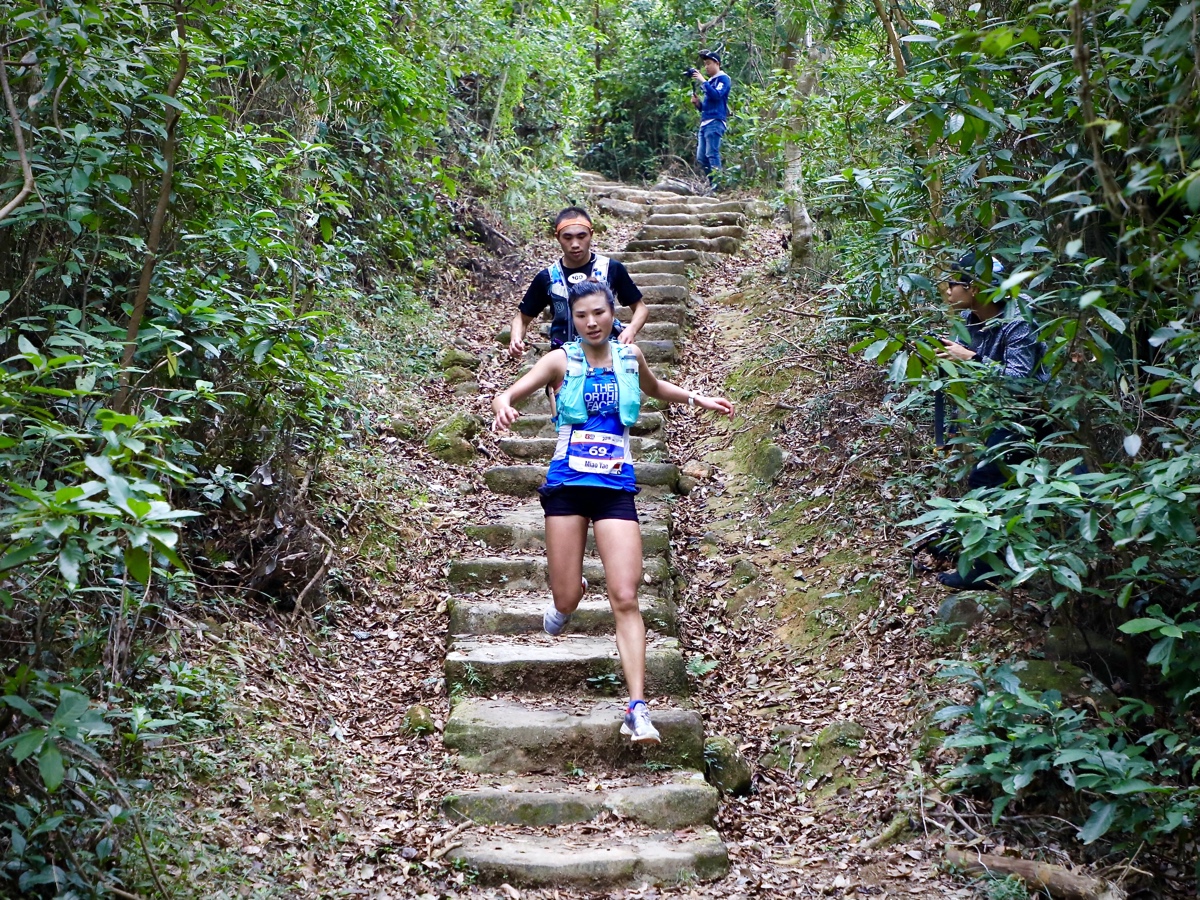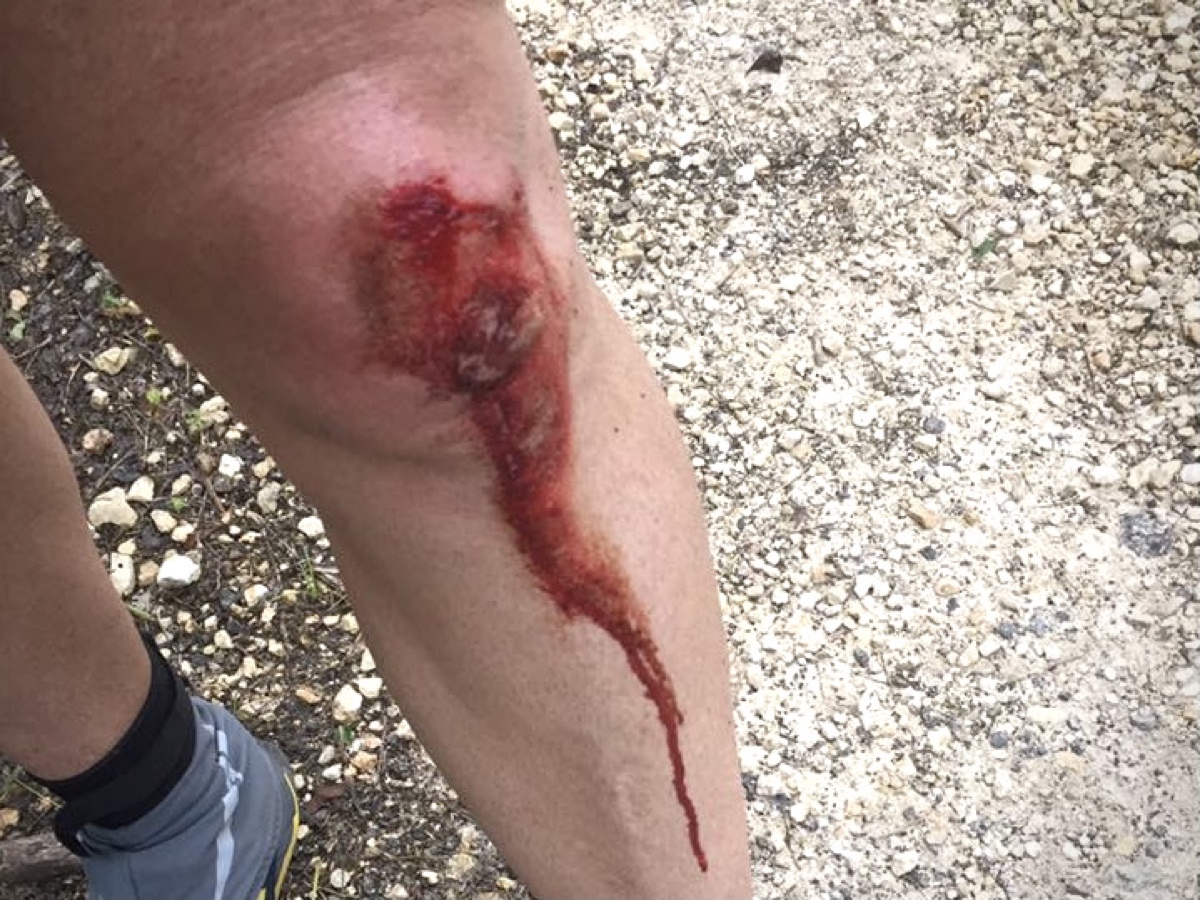Mountain trail running season is fully upon us and I’ve traded the silky-smooth volcanic-ash trails of the U.S.’s Cascade Range for the hard rock of Colorado. It’s been an adjustment! In addition to the altitude challenges I wrote about in this column last month, the sheer technicality of the trails in the Rocky Mountains is a stark contrast to the buffed-out singletrack diet I consumed in a decade of trail running in Oregon and Northern California.
The Rockies are… rocky! Whereas many U.S. West Coast trails are dirt with occasional rocks and roots, a great deal of Colorado and Wyoming tread is a loose association of stones assembled in a path between some trees and other foliage. This is a game-changer for running: how you land, push off, and lift have to adjust to a variable and at times untrustworthy surface underfoot. All these factors make it easier to trip and fall.
Last month, I raced my first Rocky Mountain ultramarathon in Wyoming’s Wind River Range. While I’ve fallen maybe four or five times total in my previous decade of ultrarunning, I fell twice and had several near-miss stumbles during this race. Though I ran away unscathed, it’s only a matter of time before I’m not so lucky.
So, what do we do when we fall? First, it’s important to determine if we’ve suffered serious injury, to triage ourselves, and to get off the trail. What if you’ve escaped major injury but are still a bit banged up? In this case, it’s important to make sure you can still move efficiently. I first wrote on this topic nearly a decade ago, with tips on how to restore general range of motion, as well as leg and core muscle activation in the aftermath.
In recent years, I’ve gained more experience treating post-traumatic injury. I have treated chronic, insidious pain and injuries stemming from unresolved traumas such as falls, car accidents, and other high-impact injuries. Now that I’m working in Steamboat Springs, Colorado where “fun trauma” from sports like running, cycling, and skiing is commonplace, I see more clearly how even minor tumbles and wipeouts can become the seed for a more serious orthopedic imbalance.
What I’ve learned is said best by my new colleague and friend, Dr. Garrett Petry, DPT: “High-energy injuries require high-energy treatment!” In other words, high-energy impact can cause considerable dysfunction as impacted soft tissues tighten, joints stiffen or are knocked off axis, and complex fascial systems — the connective tissue that unites our running body — lose functional mobility. And these issues often require significant manual force to restore.
For a substantial number of Northern Colorado clients with gradual-onset orthopedic pain, we can trace their dysfunction back to a minor fall in the preceding months or a major trauma from the more distant past. Their tissues need help. In this article, we explore how you can overcome fall trauma and prevent future injuries.

China’s Miao Yao and another runner on technical terrain during the 2018 Vibram Hong Kong 100k. Photo: iRunFar/Meghan Hicks
Grading the Severity of Your Trauma
If you’ve suffered a fall or other trauma, or if you currently have unexplained pain and you experienced a significant trauma in the past, these questions are worth asking. Did the fall or other trauma cause:
- A limp or any other compensatory movement pattern?
- Significant muscle, joint, or bone soreness lasting more than a day?
- A serious injury* elsewhere in the body?
- A prolonged period of rest due to injury or pain?
- A significant performance detriment such as a slow-down in your race or workout paces, or a loss of ease and efficiency in your running?
* Trauma with an energy high enough to, say, break a bone in the foot will usually reverberate through the rest of the leg, trunk, arms, or head.
If you answer yes to any of the above, consider the following self-assessment and restorative strategies.
Advanced Restorative Strategies for Post-Trauma
The following strategies are what any running client would receive in an in-person assessment with me or any other advanced physiotherapist. However, some of these can be undertaken and used by runners themselves to help facilitate more effective treatment:
Performance Mobility
Our series on running-mobility assessment is the foundation of self-awareness of balanced and healthy running motion. Especially if you know your baseline mobility, performing the self-assessment techniques will inform you of any systemic motion losses. This is part of any advanced orthopedic clinical evaluation, but something a runner can do independently.
Hip and Pelvis Soft-Tissue Mobility
This is a huge one. The most significant stride-, performance-, and pain-altering dysfunctions occur after a fall on the hip or pelvis. After acute healing has occurred, self-assessment and treatment of the hips and pelvis can be hugely impactful to restore full and symmetrical mobility. This should then be followed up by foundational hip stability and control work.
Visceral Mobility
I cannot stress enough how important visceral (gut abdominal) mobility is for the running system! Our hips, pelvis, and associated muscles must slide-and-glide free from the guts that overlie them for efficient running. Many factors can cause “sticky guts,” but falls and impacts onto any part of the hips, pelvis, and abdomen can cause those guts to literally stick to those orthopedic tissues.
The guts need to move freely! This video is a basic primer on belly self-mobilization, but I’ve recently begun to experiment with some gentle self-mobilization tools such as this one. (Neither I nor iRunFar are sponsored or compensated by this equipment company.)
Coccyx Health
This little bone, the coccyx, plays such an important role in our running health. Every pelvic-floor muscle attaches to it, and the nervous-system fascia of the spinal cord attaches there, making the tailbone the anchor for our functional mobility. Falls of any kind, let alone a direct impact on the coccyx, can cause profound changes to our mobility and stability. While I don’t recommend self-treatment, any thorough post-traumatic evaluation should include an assessment of the coccyx!
Final Thoughts
As Dr. Garrett Petry says, energy in requires energy out. Impactful falls and trauma, even if absent blood or breaks, can put a lot of stress into our bodies, causing serious and stubborn dysfunction. Of course, avoid falling if you can. But if you do, be aware of how those falls can change your body, and do what it takes to get things moving and aligned properly!
Call for Comments
- Have you become injured as a result of a small or large fall or impact either during running or elsewhere in life?
- Can you explain what happened as well as how you recovered?


